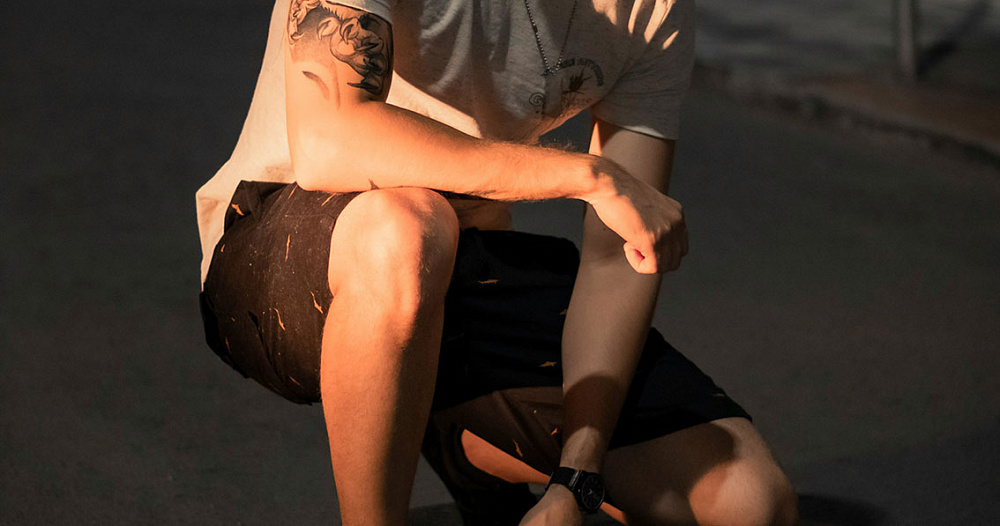Knee pain is a non-specific symptom that develops against the background of a huge number of diseases. You are unlikely to be able to determine the cause of pain while sitting at home on the couch with a smartphone in your hand and reading the Internet. We will tell you about the possible causes of pain and methods for solving the problem, but for diagnosis you will in any case need a medical examination and instrumental diagnostics. To find out the cause of knee pain and get rid of it, you can contact Dr. Waqas Javed’s Clinic.
How the knee joint works
It is important to know the approximate structure of the knee joint in order to understand what might hurt inside.
The knee joint is a movable joint between the thigh and the shin. It is formed by three bones: the tibia, femur and patella. The articular surfaces of the knee are covered with hyaline cartilage.
The knee is a synovial joint. It has a capsule, synovial membrane, and joint fluid. The synovial membrane in some people forms large folds that can become pinched and cause pain.
There are ligaments inside the knee that keep it stable. Injuries can cause ruptures of the anterior and posterior cruciate ligaments, and the medial and lateral collateral ligaments.
Between the articular surfaces of the tibia and femur there are two menisci: medial and lateral. These are cartilaginous pads that act as shock absorbers.
There are several synovial sacs in the knee joint area. Some of them can become inflamed and painful.
There is also a fat pad in the knee. Sometimes it gets pinched, causing chronic pain.
Causes of knee pain
There are dozens of known causes of knee pain. They can be acute or chronic, trauma-related or not. There are unilateral pains, when only the left or right knee hurts, as well as bilateral ones. Other joints are sometimes involved in the process. In this review, we will discuss only those types of pain that are non-traumatic in origin.
Here are the main reasons why knee joints may hurt:
- osteoarthritis of the knee joint;
- patellofemoral arthrosis;
- chondromalacia patella;
- arthritis;
- mediapatellar plica syndrome;
- Baker’s cyst;
- Hoffa’s disease (incarceration of the fat pad);
- intra-articular bodies and Koenig’s disease;
- quadriceps tendinosis;
- patellar tendinopathy;
- bursitis of the knee joint (inflammation of the synovial sacs);
- Osgood-Schlatter disease.
There are also pains that are not associated with damage to the structures of the musculoskeletal system. Neurological pains are caused by diseases of the spine, less often – peripheral nerves. Vascular pains are associated with impaired blood supply to tissues or deterioration of venous and lymphatic outflow, for example, thrombosis of the popliteal vein.
Pain can be caused by some systemic diseases that affect several joints. In some people, the knee joints begin to hurt first. Examples: rheumatoid arthritis, gout, psoriasis, systemic lupus erythematosus.
Possible consequences of knee pain
If your knee hurts, the possible consequences depend on the cause.
In the best case, the pain will go away without any health consequences if you provide your knee with long-term functional rest. This happens with some bursitis, tendinopathies, and in adolescents – with osteochondropathy of the tibial tuberosity. In such situations, the only problem is the inability to play sports or do physical work. You have to take a break from training for several months.
It is worse when the pain becomes constant and does not decrease even with normal, non-sports activities. The consequence is a decrease in the quality of life. You have to constantly take painkillers, and they have a bad effect on the digestive tract, can cause ulcers and bleeding.
Finally, the worst outcome is irreversible damage to the cartilage and bone tissue in the area of the articular surfaces of the tibia and femur. Such damage cannot be restored. You have to have knee replacement surgery. Some diseases that you do not treat for a long time lead to this outcome: for example, an old meniscus tear or the presence of loose bone-cartilage bodies in the joint. After treatment, degenerative processes no longer progress, but the tissues that are severely damaged are no longer restored.
Additional symptoms
Possible additional symptoms in patients with knee pain:
- limited knee mobility;
- morning stiffness;
- swelling;
- redness;
- crunch;
- feeling of instability;
- deformation.
Diagnostics
Diagnosis of knee pain begins with examination and palpation of tissues. Then the doctor can conduct functional tests that help determine or suggest which anatomical structures are damaged.
In most cases, instrumental diagnostics will be required to confirm and clarify the diagnosis. This may be X-ray or MRI. Less commonly, ultrasound or CT are used.
Treatment of knee pain
Treatment may be aimed at reducing pain, as well as eliminating or controlling the disease that caused the pain syndrome.
Pain relief methods:
- taking nonsteroidal anti-inflammatory drugs;
- knee block (administration of local anesthetics with glucocorticoids);
- various types of physical therapy, the most effective of which in combating pain are high-intensity laser and shock wave therapy.
Possible additional therapeutic methods aimed at reducing pain, controlling the disease, improving joint function:
- physiotherapy;
- massage;
- kinesio taping;
- intra-articular injections of hyaluronic acid;
- plasma therapy.
Some causes of pain can only be eliminated by surgery: for example, resection of a fat pad that is pinched, removal of a Baker’s cyst, or extraction of a free bone-cartilage fragment from the joint cavity. At Dr. Waqas Javed’s Clinic in Lahore, most surgeries are performed using a minimally invasive arthroscopic method, through incisions several millimeters long. Our clinic specializes in the treatment of joint diseases, so you can count on good long-term results.
Prevention
You can reduce the risk of knee pain by having regular but not excessive physical activity and maintaining a normal weight. When playing sports, you should wear quality shoes with shock-absorbing soles and exercise on non-slip and soft surfaces.
